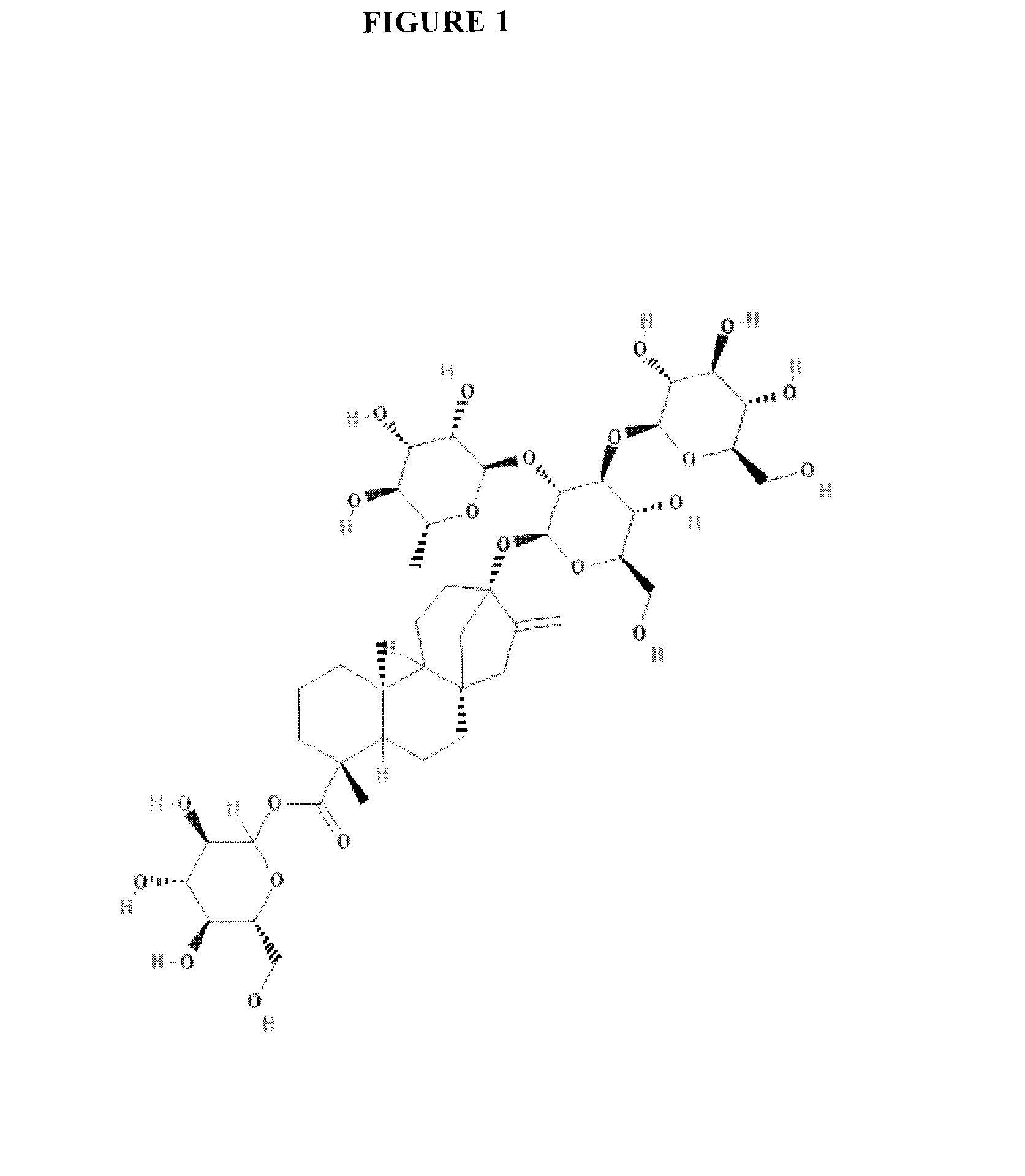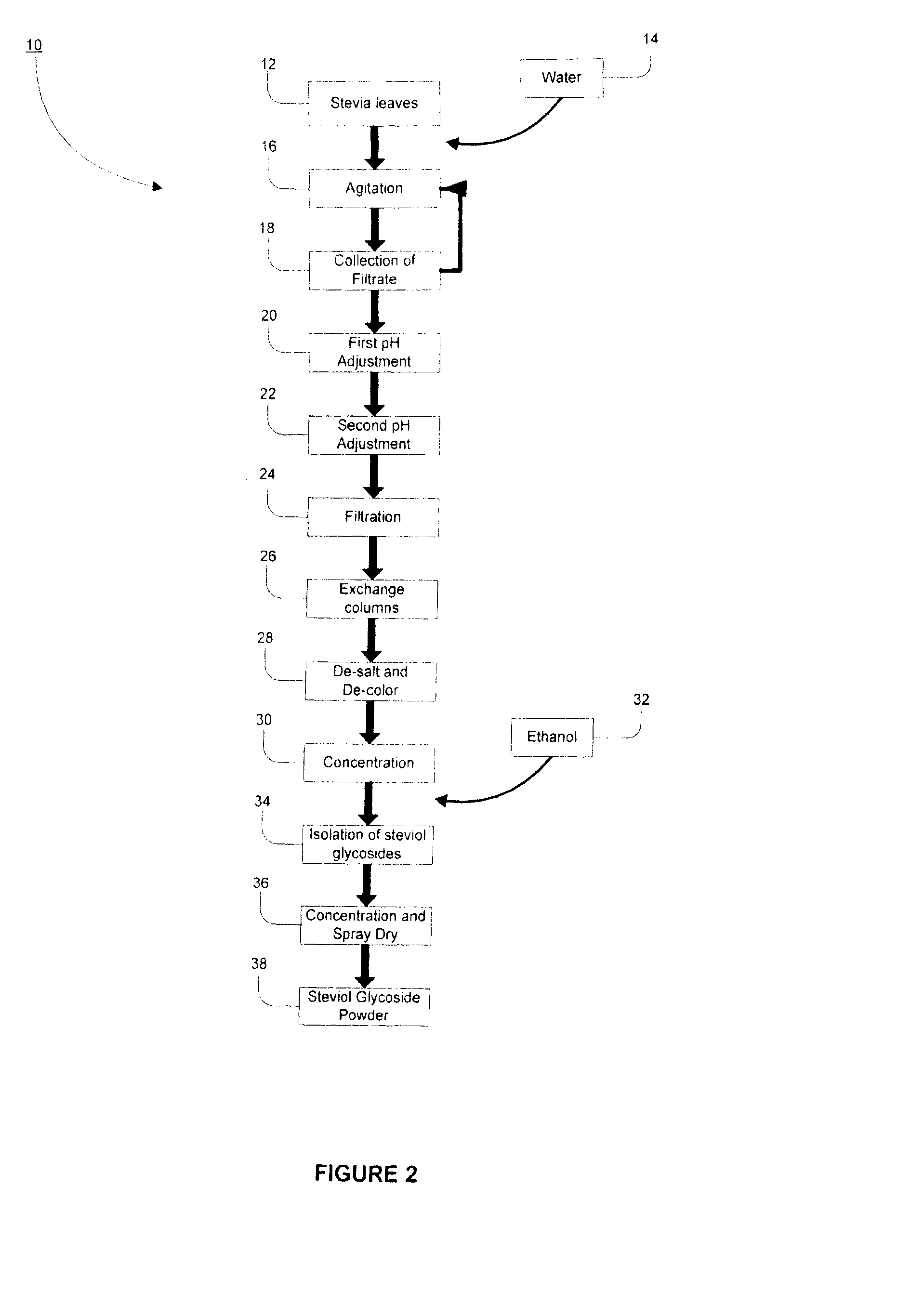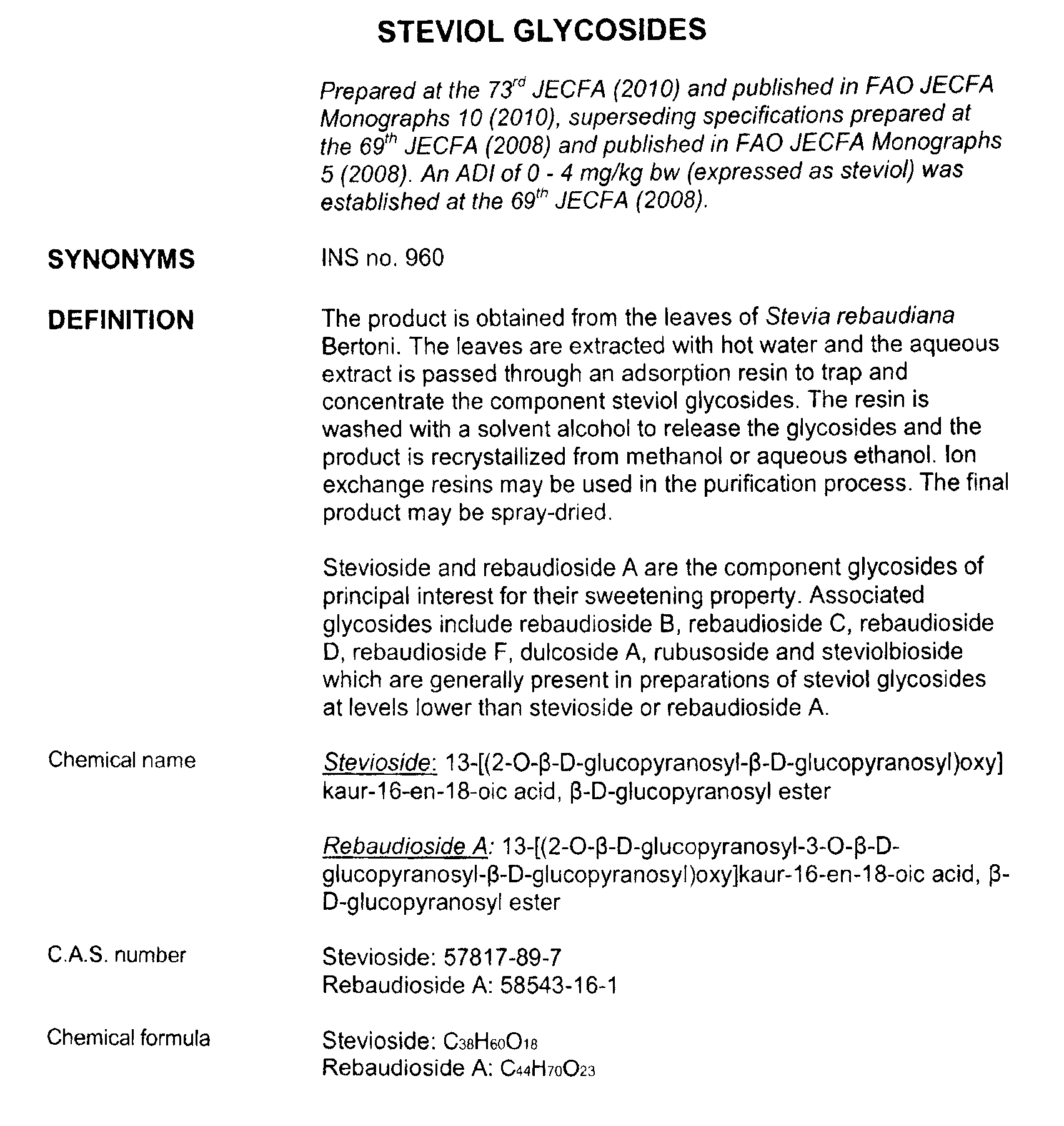Processes of Purifying Steviol Glycosides Reb C
- Summary
- Abstract
- Description
- Claims
- Application Information
AI Technical Summary
Benefits of technology
Problems solved by technology
Method used
Image
Examples
example 1
Extraction of Steviol Glycosides from Stevia rebaudiana Leaves-Preparation of Mother Liquor
[0109]One kg of the stevia leaves known to have a high content of Rebaudioside A were steeped with 2 kg of room temperature water having a pH of 7.3 in an agitation centrifuge. The leaves were agitated for 0.5 hour. The sweet water was filtered, the filtrate collected and the process repeated for a total of 5 steep / separation cycles. The pH of the sweet water filtrate solution was adjusted to pH 8.0 with approximately 30 grams of calcium hydroxide. After a rest time of about 1 hour, 50 grams of FeCl3 was added to the sweet water filtrate solution to further adjust the pH to 7.0. The solution was filtered and the resulting filtrate had a transmittance of about 68±2% at 325 nm. The filtrate flows through the resin bed, and the glycosides was eluted from the resin bed by using 75% of ethanol. The eluate was concentrated to 45-50% of solid content, and then was vacuum dried. The weight of dried el...
example 2
[0111]A saccharide mother liquor was taken, and its RC content was measured as 17.73%, and the total glycoside content 62.58% via liquid chromatography (HPLC) analysis. The saccharide mother liquor was prepared into a feedstock solution with a mass concentration of 0.5%; 300 L of feedstock solution was taken and passed through an ultra filtration membrane device manufactured by the GE company, USA, at a flow rate of 25-35 L / m2h; when the feedstock solution passed through the ultra filtration membrane, a retention was performed based on the different molecular weight of each constituent, and the ultra filtration pH was 7.2. The concentrated solution was cut off in section with 5 L as a unit, and the RC content was detected using a liquid chromatography (HPLC) analysis. 1% of the saccharide mother liquor was cut-off by an 8000 molecular weight membrane; when the saccharide mother liquor was treated with a 5500-6500 membrane, it was found that a 6000 membrane can enrich 85%-90% sacchar...
example 3
[0115]10 kilograms of the crude RC with a RC content of 30.16% prepared in example 2 were taken and mixed thoroughly with 25 kilograms of 87% of ethanol, 68% of methanol and 87% of acetone at a ratio of 3:2:1, to prepare a mixed solvent; after complete dissolution at 50° C., the solvent was rapidly cooled down to an ambient temperature over 10 minutes, and the mixture was stirred for 4 minutes every 8 hours; after standing for 40 hours, the dissolved mixture was subjected to a solid-liquid separation, and a solution of the solid filtered out was adjusted to a concentration of 22% with the addition of non-saline water; the solution was concentrated to 38% and dried so as to obtain 3.0 kilograms of a refined rebaudioside C; the rebaudioside C (RC) content in the refined rebaudioside C was 85.43%; the methanol, ethanol, acetone and excessive water were evaporated from the liquid which was obtained through a solid-liquid separation; the aqueous rebaudioside C solution concentration was ...
PUM
| Property | Measurement | Unit |
|---|---|---|
| Temperature | aaaaa | aaaaa |
| Temperature | aaaaa | aaaaa |
| Temperature | aaaaa | aaaaa |
Abstract
Description
Claims
Application Information
 Login to View More
Login to View More - R&D
- Intellectual Property
- Life Sciences
- Materials
- Tech Scout
- Unparalleled Data Quality
- Higher Quality Content
- 60% Fewer Hallucinations
Browse by: Latest US Patents, China's latest patents, Technical Efficacy Thesaurus, Application Domain, Technology Topic, Popular Technical Reports.
© 2025 PatSnap. All rights reserved.Legal|Privacy policy|Modern Slavery Act Transparency Statement|Sitemap|About US| Contact US: help@patsnap.com



